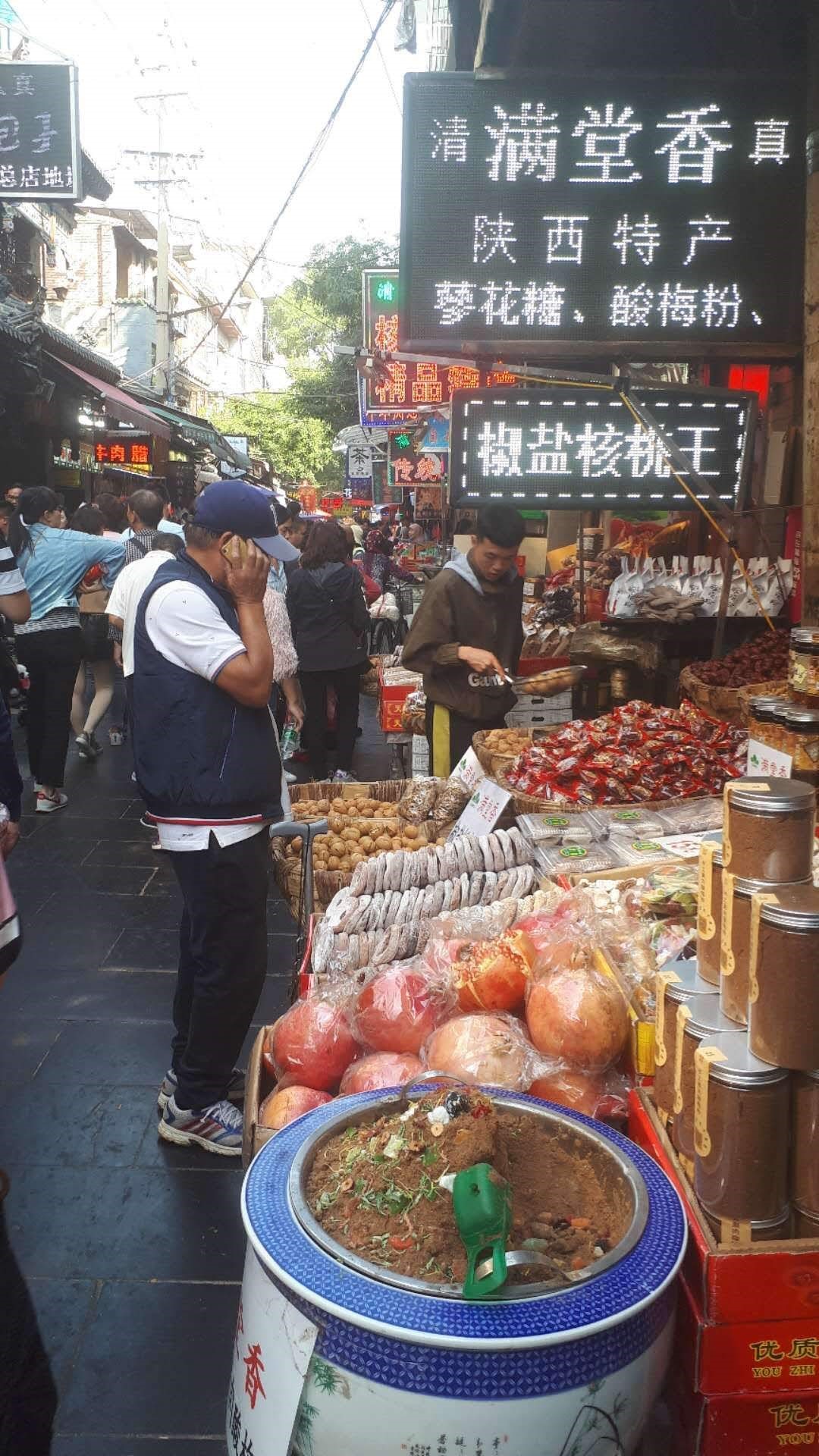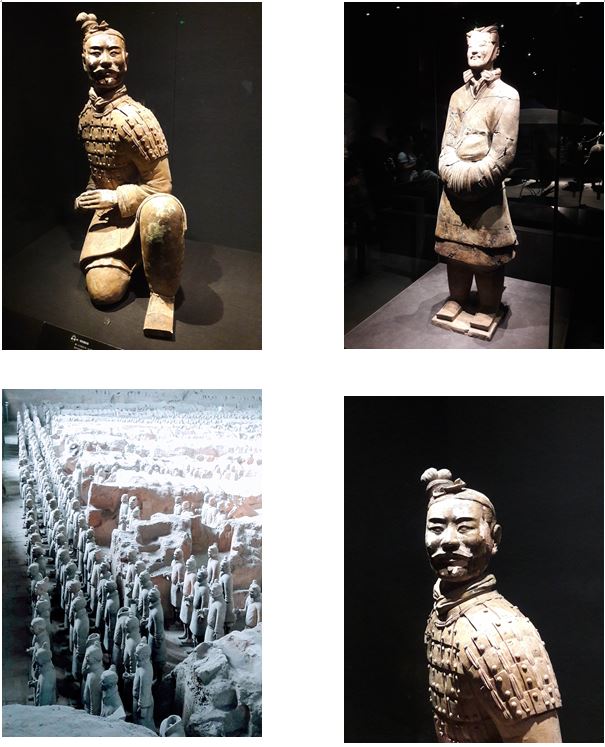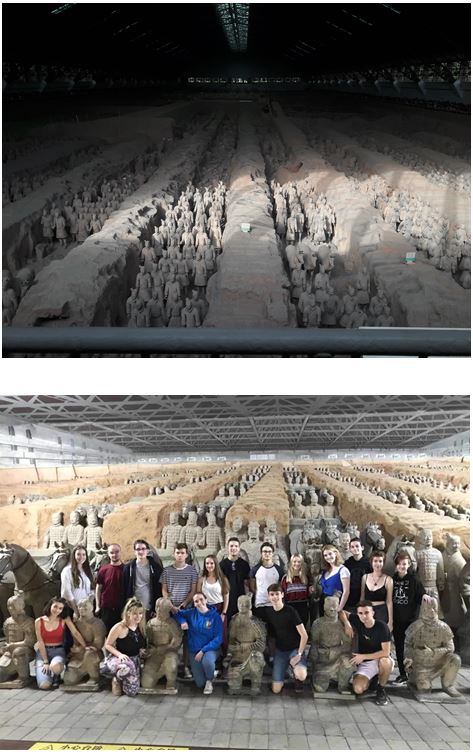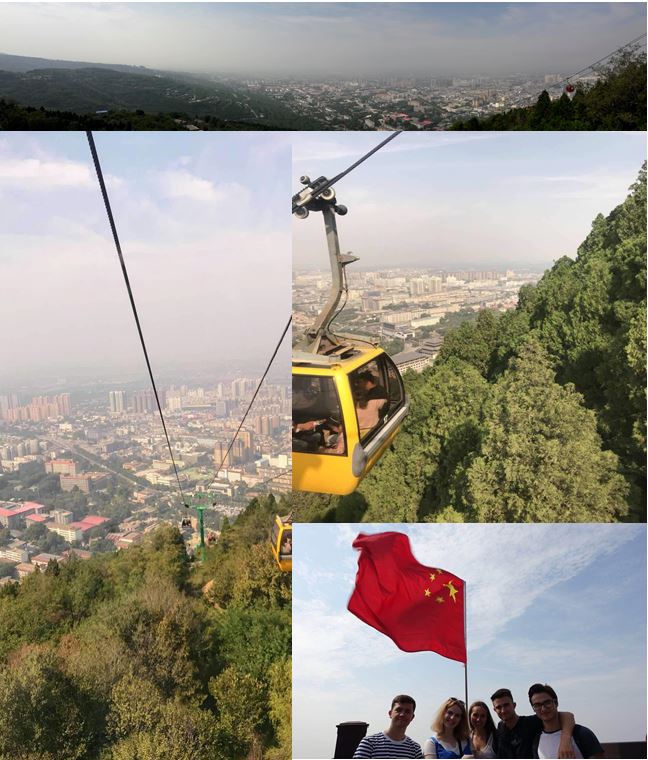Our trip to Xi'an
大家好!
October has been a busy month for us all, and it doesn’t seem too long ago that I was writing to tell you how I was settling in back in September.
China’s second-largest national holiday, known as the Mid-Autumn Festival (中秋節 zhōngqiū jié), took place in the first week of October, and so we took the week’s holiday as an opportunity to travel. We visited Xi’an (西安), the capital city of Shaanxi province in north-west China. It is one of the oldest cities in China (it used to be known as Chang’an (长安)), and is also historically one of the most important: Xi’an was the capital city of thirteen different ancient dynasties since the Stone Age around 3,000 years ago, and is one of China’s Four Great Ancient Capitals. It also marks the starting point of the Silk Road, a significant network of trade routes which has connected Asia, Europe and East Africa since Medieval times and facilitated trade and movement not only of textiles and spices but also people and philosophies.
Due to the ties with Central Asia and India through the Silk Road, Xi’an has a high Muslim and Buddhist population. There were many exciting culinary experiences in Xi’an as a result of the different cultural influences, and Shaanxi province is famous for it – there is even a street devoted entirely to Islamic cuisines like lamb skewers. Shaanxi cuisine is known for its spices and range of noodle dishes, one such dish being biang biang noodles, a dish made with thick noodles and lots of chillies. We found out that ‘biang’ is also one of the most complex Chinese characters to write, as it contains 43 strokes, so many restaurants wrote it in pinyin rather than in Chinese characters.

Character for 'biang'
It was also interesting to find 肉夹馍 (ròu jiā mó) in Xi’an, which translates as meat sandwich. 肉夹馍have been eaten in Shaanxi since the Qin Dynasty (221–206 BC). Who knew Xi’an was the home of the world’s first hamburger?

Muslim Street Food
To get to Xi’an, we took the train (火车, huǒchē), though having booked the trains quite late during a Chinese national holiday, we weren’t left with much choice and our journey ended up taking 20 hours (as opposed to the six hours that it takes on the high speed train). It was well worth it though, and our week was spent seeing historical sites such as the Terracotta Warriors.
Terracotta Warriors (兵马俑 , bīngmǎyǒng)
Built to protect the Emperor Qin in the afterlife and accompany him in the grave 2,200 years ago, an army of generals, archers and horses were made from terracotta by 720,000 builders and buried not far from his tomb. Around 8,000 warriors, 100 chariots, 400 horses, and more than 100,000 weapons have been uncovered from three sites and around 2,000 are on display. The site was discovered in 1974 when local farmers found pottery fragments whilst digging a well. It remains an ongoing project to reconstruct the Warriors, as many of them have fragmented because of the pressure of the earth above them.
Terracotta Warriors
Li Mountain (骊山 , líshān)
Another highlight of our stay in Xi’an was taking the cable car up Li Mountain. The views of the city from the top of the hill were spectacular, and being up high on a mountain was a contrast to the flat city of Tianjin that we have become used to.
Views from Lishan
After an incredibly busy week and another 20 hours on a train back to Tianjin, we were relieved to see familiar places and get home.
Soon we will be visiting a Chinese family, which has been organised by one of our teachers, 王老师, which we are all really looking forward to.
再见!


